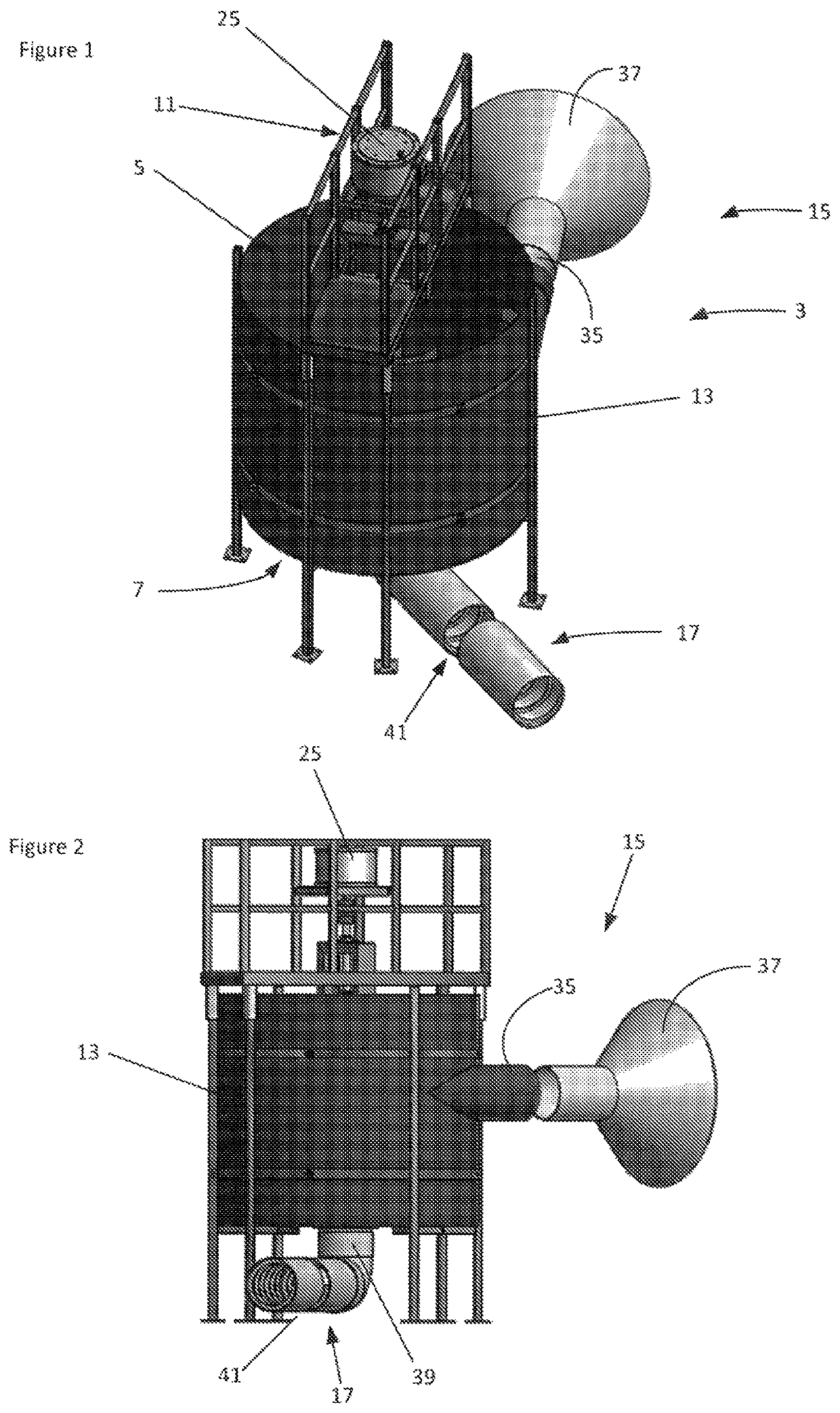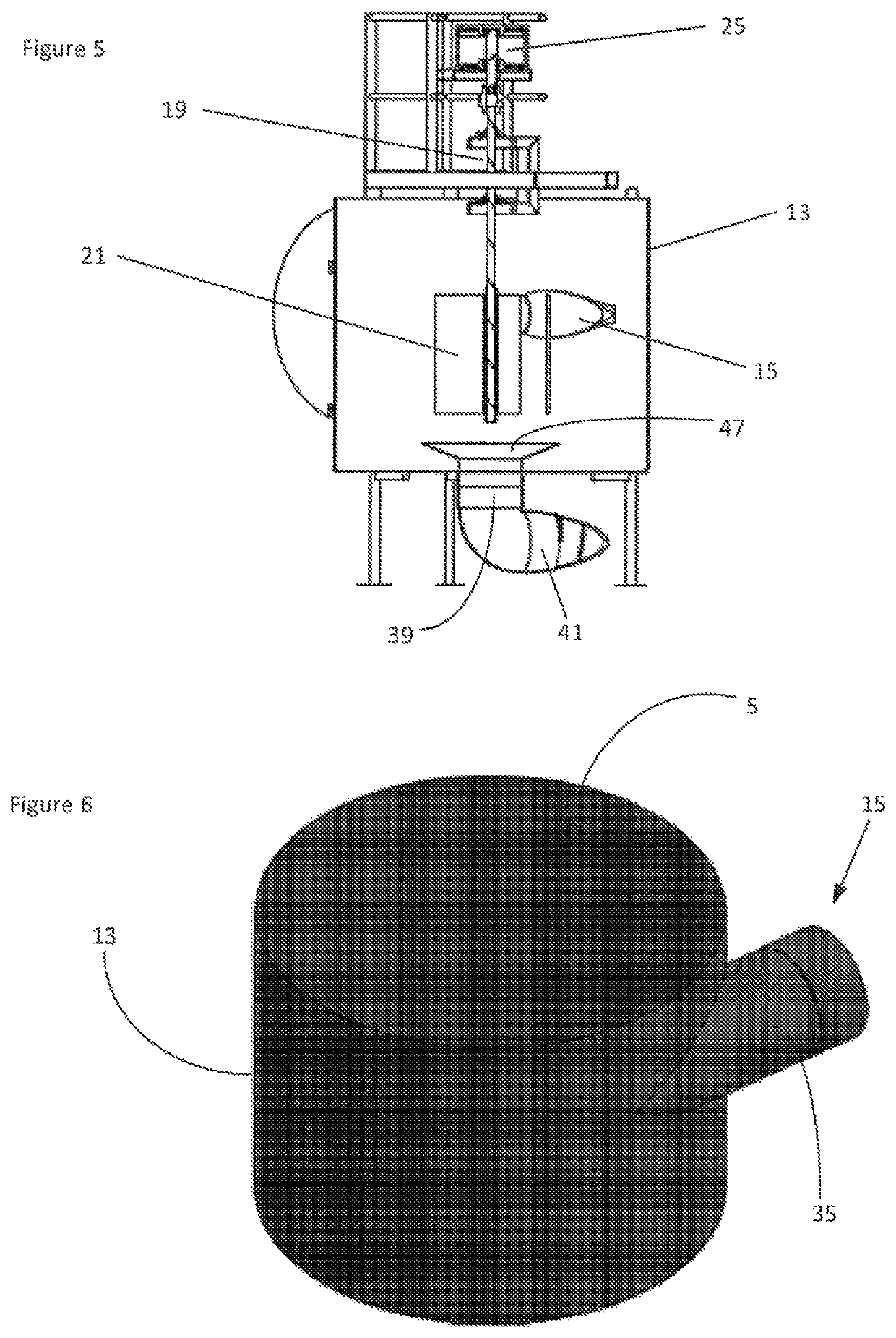Assembly for generating electricity
a technology for generating electricity and assembly, which is applied in the direction of renewable energy generation, greenhouse gas reduction, final product manufacturing, etc., can solve the problems of low maintenance and simple assembly design, and achieve the effect of maximising the output of the rotor uni
- Summary
- Abstract
- Description
- Claims
- Application Information
AI Technical Summary
Benefits of technology
Problems solved by technology
Method used
Image
Examples
Embodiment Construction
[0094]The embodiment of the electricity generation assembly 3 shown in the Figures is one of a number of possible embodiments of the invention. This particular embodiment is adapted to be positioned in a body of water or beside a body of water as a free-standing unit. The following description of the embodiment focuses on positioning the assembly in a body of water. Other embodiments of the invention are also adapted to be positioned in a body of water as a free-standing unit and further embodiments of the invention are adapted to be positioned beside a body of water.
[0095]With reference to the Figures, the assembly 3 includes a chamber 5 having a base 7, a cylindrical side wall 13 (having a cylindrical internal surface) extending upwardly from the base 7, an inlet 15 in the side wall 13, an outlet 17 in the base 7, a rotor unit having a shaft 19 and a rotor 21 mounted to the shaft 19 and located in and rotatable within the chamber 5 in response to water flow through the chamber 5, ...
PUM
 Login to View More
Login to View More Abstract
Description
Claims
Application Information
 Login to View More
Login to View More - R&D
- Intellectual Property
- Life Sciences
- Materials
- Tech Scout
- Unparalleled Data Quality
- Higher Quality Content
- 60% Fewer Hallucinations
Browse by: Latest US Patents, China's latest patents, Technical Efficacy Thesaurus, Application Domain, Technology Topic, Popular Technical Reports.
© 2025 PatSnap. All rights reserved.Legal|Privacy policy|Modern Slavery Act Transparency Statement|Sitemap|About US| Contact US: help@patsnap.com



